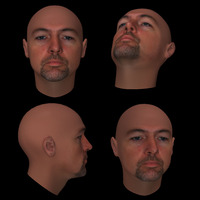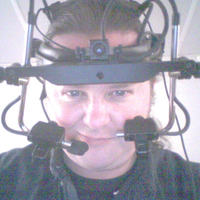
Kevin R Brooks
My interest in Perception was stimulated early in life by various visual illusions, and by the discovery that my colour vision was defective. As an undergraduate, I studied Physics at Imperial College, London (UK), before moving to the University of York (UK) to study Psychology. At the University of Sussex (UK) I completed my doctoral thesis, entitled "Mechanisms of Suprathreshold Stereomotion Perception" under the supervision of Professor George Mather. Following my formal education, I continued my research into the perception of motion in depth as Senior Research Associate at NASA Ames Research Center, Moffett Field, (USA) with Dr. Leland Stone. At the University of New South Wales (Australia), a post-doc with Professor Barbara Gillam allowed me to broaden my interest in depth perception to include issues of unmatched stereopsis. A further post-doctoral appointment to work with Dr. Richard Kemp allowed me to develop a long standing interest in face perception. After a Senior Lectureship at the University of Plymouth (UK), I returned to Australia to my current position.
less
Related Authors
Timothy Jordan
İbn Haldun Üniversitesi
Michael Spivey
University of California, Merced
David Pierre Leibovitz
Carleton University
John Cass
Western Sydney University
John A Greenwood
University College London
Dr Jason J Braithwaite
Lancaster University
Eros Carvalho
Universidade Federal do Rio Grande do Sul
Meera Mary Sunny
Indian Institute of Technology Gandhinagar
Robin L Hill
University of Edinburgh
Richard Cook
Birkbeck College, University of London
InterestsView All (23)










Uploads
Papers by Kevin R Brooks
18 aftereffect, such that observers’ point of subjective normality (PSN) for bodies shifts towards
19 narrower bodies. The converse effect is shown for adaptation to wide bodies. In low-level
20 stimuli, object attention (attention directed to the object) and spatial attention (attention
21 directed to the location of the object) have been shown to increase the magnitude of visual
22 aftereffects, while object-based attention enhances the adaptation effect in faces. It is not
23 known whether featural attention (attention directed to a specific aspect of the object) affects
24 the magnitude of adaptation effects in body stimuli. Here, we manipulate the attention of
25 Caucasian observers to different featural information in body images, by asking them to rate
26 the fatness or sex typicality of male and female bodies manipulated to appear fatter or thinner
27 than average. PSNs for body fatness were taken at baseline and after adaptation, and a change
28 in PSN (ΔPSN) was calculated. A body size adaptation effect was found, with observers who
29 viewed fat bodies showing an increased PSN, and those exposed to thin bodies showing a
30 reduced PSN. However, manipulations of featural attention to body fatness or sex typicality
31 produced equivalent results, suggesting that featural attention may not affect the strength of
32 the body size aftereffect.
18 aftereffect, such that observers’ point of subjective normality (PSN) for bodies shifts towards
19 narrower bodies. The converse effect is shown for adaptation to wide bodies. In low-level
20 stimuli, object attention (attention directed to the object) and spatial attention (attention
21 directed to the location of the object) have been shown to increase the magnitude of visual
22 aftereffects, while object-based attention enhances the adaptation effect in faces. It is not
23 known whether featural attention (attention directed to a specific aspect of the object) affects
24 the magnitude of adaptation effects in body stimuli. Here, we manipulate the attention of
25 Caucasian observers to different featural information in body images, by asking them to rate
26 the fatness or sex typicality of male and female bodies manipulated to appear fatter or thinner
27 than average. PSNs for body fatness were taken at baseline and after adaptation, and a change
28 in PSN (ΔPSN) was calculated. A body size adaptation effect was found, with observers who
29 viewed fat bodies showing an increased PSN, and those exposed to thin bodies showing a
30 reduced PSN. However, manipulations of featural attention to body fatness or sex typicality
31 produced equivalent results, suggesting that featural attention may not affect the strength of
32 the body size aftereffect.